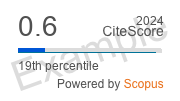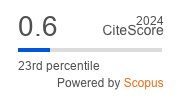Optimization of patient flow routing as a basis for improving organizational efficiency of outpatient care (experience of the Tomsk region)
https://doi.org/10.29001/2073-8552-2020-35-4-95-102
Abstract
Introduction. The problem of access to medical care remains extremely relevant in many countries in the world nowadays. In this context, it is advisable to optimize patients’ flow, that is, primary and repeated admissions and appointments for preventive and medical care purposes, and information. The document titled “The Standard for Organizing Outpatient Care in the Tomsk Region” was developed to solve this problem in the region. The document regulates the organizational features of providing medical care to the residents in state polyclinics. The document addresses the following: service parameters, issues of routing patient flows, and the procedures for organizing workplaces and specialists’ behavior.
Objective. To evaluate the effectiveness of the solutions proposed in “the Standard for Organizing Outpatient Care in the Tomsk Region” for routing patient flows in outpatient clinics.
Material and Methods. The effectiveness of measures was evaluated for 35 medical organizations with outpatient departments based on the temporal changes in eight indicators in 2018–2019.
Results and discussion. Except for the percentage of children who passed preventive examination out of the number of children subject to preventive examination, positive dynamics were observed for all study parameters. First of all, this observation suggests the adequacy of proposed solutions from the perspective of the health care system, and secondly, it indicates their acceptance by the patient community. However, the extent of growth/decline is extremely uneven depending on the medical organization, which requires further research.
Conclusion. Standardization of patient flow routing within the state regional health system through the issuance of appropriate orders and further monitoring of their implementation is an effective way to increase the medical care availability.
About the Authors
I. A. DeevRussian Federation
Ivan A. Deev, Dr. Sci. (Med.), Professor, Department of Pediatrics with Course of Childhood Diseases, Faculty of Medicine
2, Moskovsky trakt, Tomsk, 634050
O. S. Kobyakova
Russian Federation
Olga S. Kobyakova, Dr. Sci. (Med.), Professor, Head
11, Dobrolyubov str., Moscow, 127254
I. P. Shibalkov
Russian Federation
Ivan P. Shibalkov, Senior Lecturer, Health Organization and Public Health Department
2, Moskovsky trakt, Tomsk, 634050
L. M. Protasova
Russian Federation
Lyubov M. Protasova, Graduate Student, Health Organization and Public Health Department
2, Moskovsky trakt, Tomsk, 634050
V. A. Boykov
Russian Federation
Vadim A. Boykov, Cand. Sci. (Med.), Associate Professor, Health Organization and Public Health Department
2, Moskovsky trakt, Tomsk, 634050
S. V. Baranovskaya
Russian Federation
Svetlana V. Baranovskaya, Cand. Sci. (Med.), Associate Professor, Health Organization and Public Health Department
2, Moskovsky trakt, Tomsk, 634050
T. A. Suvorova
Russian Federation
Tatyana A. Suvorova, Graduate Student, Health Organization and Public Health Department
2, Moskovsky trakt, Tomsk, 634050
M. A. Babeshina
Russian Federation
Marina A. Babeshina, Deputy Chief Physician
51, Lenin ave., Tomsk, 634034
References
1. Nikiforov V.V., Suranova T.G., Mironov A.Yu. COVID-19 coronavirus infection pandemic. Algorithm of actions of medical workers of clinic in identifying patients with suspected coronavirus. Medical Alphabet. 2020;(2):6–13 (In Russ.). DOI: 10.33667/2078-5631-2020-2-6-13.
2. Kolbin A.S. An early assessment of the efficacy of medicines in the treatment of patients with COVID-19. Russian Journal of Infection and Immunity. 2020;10(2):277–286 (In Russ.). DOI: 10.15789/2220-7619-AEA-1458.
3. Sertakova O.V., Ivanova T.A., Umalatova G.A. Socio-economic approach to increasing the quality of state management in the system of primary medical and sanitary assistance to the population. Vestnik Vserossijskogo Obshhestva Specialistov po Mediko-social’noj Ekspertize, Reabilitacii i Reabilitacionnoi Industrii. 2017;(4):22–29 (In Russ.).
4. Burtsev D.V., Avanyan N.L., Skripets N.V. The practice of implementation a system of quality management in the public institution of health «Regional consultative-and-diagnostic center». Menedzhment Kachestva v Medicine. 2018;(1):58–64 (In Russ.).
5. Kochubey A.V., Konanykhina A.K., Kochubey V.V. Management of patient flows in the organization of primary health care. Vestnik Roszdravnadzora. 2016;(5):96–99 (In Russ.).
6. Davydov A.Ju., Artemyeva G.B., Peregudova N.N. Analysis of efficiency of primary preventive visit of patient to obstetrician-gynecologist based on lean production methods. Science of Young (Eruditio Juvenium). 2020;8(2):141–153 (In Russ.). DOI: 10.23888/HMJ202082141-153.
7. Garifullin T.Yu., Avdeeva M.V., Panov V.P., Filatov V.N. Directions and methods for improving performance of the clinic front desk within the framework of the «New Model of the Medical Organization Providing Primary Health Care» project. Social Aspects of Population Health [serial online]. 2020;66(3):3 (In Russ). URL: http://vestnik.mednet.ru/content/view/1164/30/lang,ru/. DOI: 10.21045/2071-5021-2020-66-3-3.
8. Deev I.A., Boykov V.A., Kanonerker L.M., Kobyakova O.S., Kulikov E.S., Novikova I.Yu. et al. Application of lean management in medical examination of children in Tomsk Region. Manager in Health Care. 2019;(9):30–36 (In Russ.).
9. Order of the Ministry of health of the Russian Federation No. 173n dated March 29, 2019 “On approval of the procedure for conducting dispensary monitoring of adults” (In Russ). URL: https://www.garant.ru/products/ipo/prime/doc/72132764/ (available from: 01.09.2020).
10. Holopov A.V., Boykov V.A., Kobyakova O.S., Deev I.A. Development and implementation of a standard for the organization of work of registries medical organizations: the project «Entrance group». Manager in Health Care. 2018;(2):37–43 (In Russ.).
11. Order of the Moscow city health Department No. 1470 of December 20, 2012 “On optimizing the work of making an appointment with a doctor in electronic form” (as amended on June 29, 2017) (In Russ.). URL: http://docs.cntd.ru/document/456054699 (available from: 01.09.2020).
12. Order No. 18/PR/469 of the Primorsky Krai Department of health dated May 23, 2018 “On approval of the procedure for making an appointment with a doctor in medical organizations providing primary health care within the framework of the territorial program of state guarantees of free medical care for citizens in the Primorsky Krai” (In Russ.). URL: http://docs.cntd.ru/document/543746840 (available from: 01.09.2020).
13. Chetverikova N.A. Personnel resistance to changes as a reaction to the state of risk and uncertainty. Vestnik Universiteta. 2018;(9):159–163 (In Russ.). DOI: 10.26425/1816-4277-2018-9-159-163.
Review
For citations:
Deev I.A., Kobyakova O.S., Shibalkov I.P., Protasova L.M., Boykov V.A., Baranovskaya S.V., Suvorova T.A., Babeshina M.A. Optimization of patient flow routing as a basis for improving organizational efficiency of outpatient care (experience of the Tomsk region). Siberian Journal of Clinical and Experimental Medicine. 2020;35(4):95-102. (In Russ.) https://doi.org/10.29001/2073-8552-2020-35-4-95-102





.png)





























